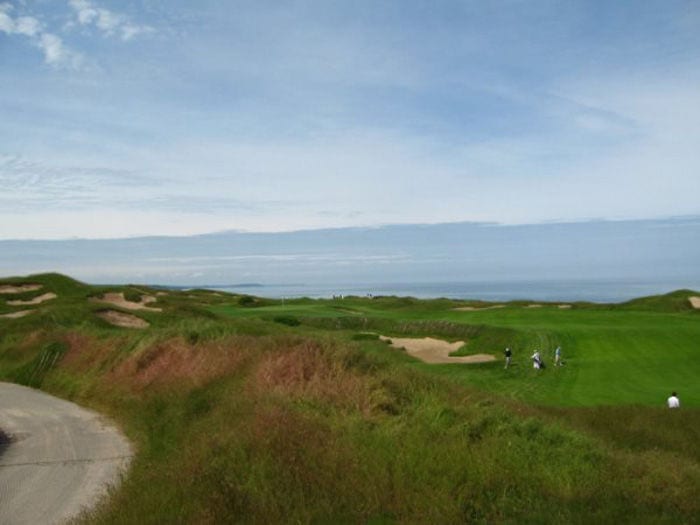
When the final major of the season for the PGA Tour concludes at Whistling Straits August 13 through 16, it will mark the first time ever that three out of the four majors were hosted on “links-style” golf courses. Often, golfers refer to “hitting the links” when going out to play, but “links” refers to a type of golf course that originated in Great Britain, most notably in Scotland. Most links courses are located near or on a coast of a huge body of water like an ocean, sea, or lake. Other characteristics include sand dunes, little or no water hazards, and few trees. Due to the locations of these courses, one of the main determinants of the difficulty of the course depends on weather conditions, particularly the wind.
As seen during the last two majors at St. Andrews and Chambers Bay, the players faced a number of challenges to which they are not accustomed on a regular basis when playing regular PGA Tour events. Likewise, when the PGA Championship is held on the western shores of Lake Michigan this August, players will contend with a links course that is completely exposed to the elements of Mother Nature, especially the wind. While rain and sunshine can present quandaries regarding the rules of golf, wind issues require care and knowledge of the rules of golf, as it’s not always intuitive.
The rules explain that wind is not an “outside agency.” The meaning of that statement provides that, by default, a ball that is at rest and is then moved by wind will be played from its new location instead of being replaced. Below are a few instances that have already happened this year in the majors as well as possible situations that may arise in this year’s final major championship.
For example, suppose a player’s approach shot finishes on the peak of a false-front putting green. As the player is walking to the green, a gust blows the ball down the false front towards the player.
In this scenario, there is no penalty; however, the player must now play the ball at its new position short of the green.
In another scenario, a player’s shot again finishes just on top of a false front on the putting green. After marking his ball on the green, he places the ball back down on the green, removes his marker, and steps back to read his putt. At that point, a gust blows the ball down the false front and off the green.
The ruling is that there is no penalty, and the ball must be played from its new position short of the green. If the player kept his marker behind the ball after replacing his ball, the same ruling would still be in effect. The ball was in play as soon as the player replaced it, regardless of whether the ball marker had been lifted. The presence of the ball marker does not affect the ruling.
Ina third hypothetical situation, a player on the green addresses his ball. Before beginning his stroke, a gust of wind moves the player’s ball.
While normally a player incurs a penalty stroke and must replace the ball if it moves after he has addressed it, there is an exception if it is known that something else caused the ball to move. If it was clear that the wind caused the ball to move, there is no penalty, and the player would play from the new location. If it cannot be determined or virtually certain that wind caused the ball to move, then the player incurs a penalty stroke and must replace the ball.
These are all situations that show that the wise player realizes that it is in his or her best interest to learn more than just relief procedures under the rules of golf.



